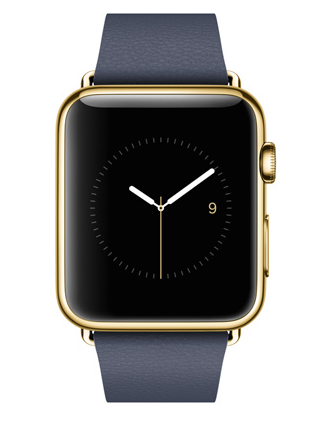 At Apple’s much anticipated keynote on September 9th, they shared a few new products. Two new versions of the iPhone 6, one slightly greater in both size and power when compared to the other, a new operating system for said new iPhone, and, as many in the industry expected, they added their own wearable to the market. They call it, rather unimaginatively, the Apple Watch.
At Apple’s much anticipated keynote on September 9th, they shared a few new products. Two new versions of the iPhone 6, one slightly greater in both size and power when compared to the other, a new operating system for said new iPhone, and, as many in the industry expected, they added their own wearable to the market. They call it, rather unimaginatively, the Apple Watch.
Wearables have been making a sizable dent in the technology market lately, most notably with the Samsung Gear S, a watch style piece of technology that interfaces with one’s phone. There are a multitude of these devices available, however, from market giants like Nike all the way to smaller companies like Xtreme. One thing holds true for many of the wearables of today: the applications for most of these devices revolve around fitness.
So, how does Apple’s newest product stack up? Well, an article from ABC gave some insight into just where it’s flaws might lie.
The Apple Watch is more expensive
The starting price for the Apple Watch is $349, which is high for wearables in the market right now (as a comparison, the Xtreme wearable will run you $40 and the Samsung Galaxy Gear sits at $169). The price is doubled when you take into account the fact that it only works with an iPhone. So, for those of us without one of the latest Apple phones, the price really might be a barrier to entry giving some market space back to cheaper, similar products.
Late to the Party
Apple’s newest member of the family is also arriving at a time when other companies have already started to build a market base. It was only just announced a few days ago (at the time of writing this) and it will not hit shelves for another six long months. In the tech world, six months is an eternity. Other companies will have plenty of time to build new marketing strategies and, in some cases, even new products, to counter Apple’s newcomer. Apple always makes a fantastic product but will it hold up against competition that has had six months to prepare? Who knows.
Battery Life
A lot of the wearables, particularly the fitness centered ones, these days can go days, even weeks, without a charge. In contrast, many industry leaders are predicting that the Apple Watch will need at least a daily charge. In fairness, this is not a certainty as Apple deflected the question during their keynote, but, based on the performance of their other devices and the sheer quantity of things the Apple Watch is slated to be able to do, it seems likely that it won’t be able to last as long as it’s competitors.
Will the Apple Watch manage to follow in the footsteps of it’s incredibly well-selling older siblings, like the iPod and iPhone? Are wearables like the Apple Watch even going to last or is it just another tech fad? Only time will tell.